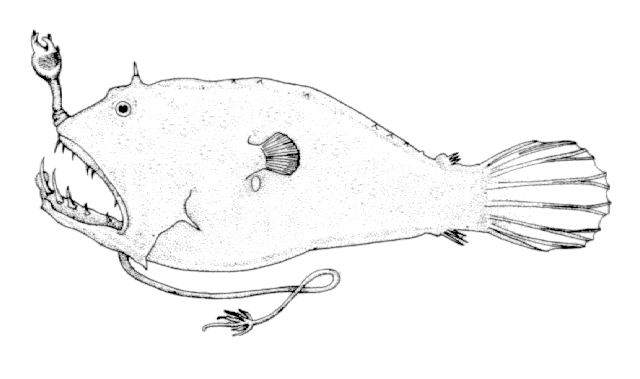| Linophrynidae (Leftvents) |
| 2.6 cm SL (male/unsexed); 22.5 cm (female) |
|
bathypelagic; marine; depth range 0 - 1500 m |
| Atlantic Ocean: a single record is known in the eastern Atlantic, also recorded from the northwest Atlantic and off Iceland. Northeast Pacific: known from two records. |
|
Dorsal soft rays (total): 3-3; Anal soft rays: 2-3. Metamorphosed females distinguished by the following characteristics: escal bulb with distal prolongation, conical at base and distally more or less deeply bifurcated; short posterior appendage, conical or compressed; absence of additional escal appendage; barbel with long undivided stem and a distal tassel of branches; stem of barbel without filaments or lateral branches; distal tassel more or less distinctly divided into 3-4 basal and 3 terminal branches; juvenile female with concentration of subdermal pigment on caudal peduncle; parasitic males with pointed sphenotic spines (Ref. 86949). |
| Also mesopelagic (Ref. 10762). |
|
Least Concern (LC); Date assessed: 11 October 2018 Ref. (130435)
|
| harmless |
Source and more info: www.fishbase.org. For personal, classroom, and other internal use only. Not for publication.

